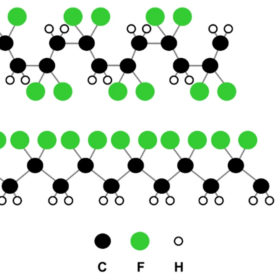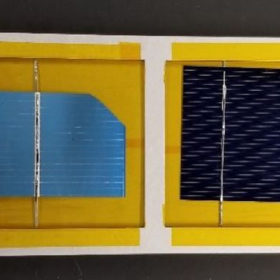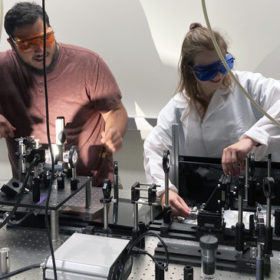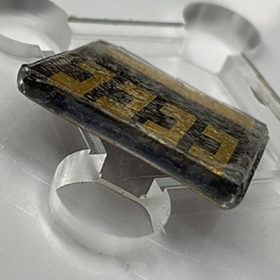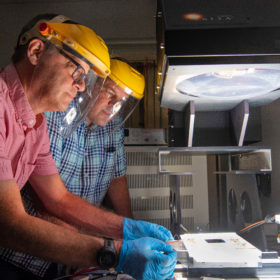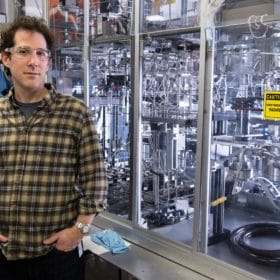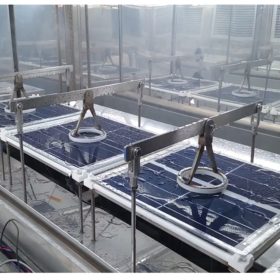Putting polyvinylidene-fluoride backsheets to the test
US scientists tested PV modules built with backsheets and polyvinylidene-fluoride (PVDF) layers, to replicate the degradation the material has suffered in the field of accelerated testing. By exposing the modules to multiple stresses, they were able to cause degradation in the backsheet materials. Though this did not closely match what has been seen in the field, such testing can be useful in identifying potential weaknesses.
Role of UV in solar cell degradation
US scientists have tested a range of modern cell designs under strong ultraviolet light and have found that many of them, including p-type PERC and n-type heterojunction cells, are more susceptible to degradation than older back surface field designs. They noted that the rear side of bifacial cells may be particularly vulnerable.
Self-healing perovskites can withstand fierce cosmic radiation
The development of a set of testing protocols for perovskite solar cells intended for use outside Earth’s atmosphere could lead to the devices being installed permanently, and even manufactured, on the moon.
Lead absorbing encapsulant for perovskite solar cells
Scientists in the United States developed what they describe as a ‘scotch-tape like’ solution, which can absorb potential lead leakage from perovskite solar cells, preventing the toxic material from entering the environment. The tape, according to the scientists, can easily be integrated with existing encapsulation strategies, and was shown to absorb 99.9% of lead leaked from cells from that were severely damaged.
Perovskites get a $14m boost
The United States Department of Energy is providing $14 million for a research center for perovskite solar technology. Led by Sandia National Laboratories, the center’s work will focus on establishing standard testing protocols as well as ensuring the long-term reliability of perovskite cells and the bankability of companies setting up to produce them.
Indonesian government has vastly underestimated solar potential
A Jakarta thinktank says the authorities need to significantly raise their clean energy ambitions as even the most conservative estimates of the volume of solar capacity the nation could host far outstrip the 207 GW the energy ministry has suggested.
New approach to III-V tandems sets 32.9% efficiency record
A collaboration between the U.S. National Renewable Energy Laboratory and Australia’s University of New South Wales has yielded a new efficiency record of 32.9% for a tandem cell device utilizing III-V materials. Key to the achievement was a new technique enabling the researchers to take advantage of “quantum wells” in the material that serve to trap charges and enable tuning of the cell bandgap to absorb more of the light spectrum.
Perovskite-based solar window tech from NREL
NREL’s new solar window darkens in the heat of the sun, producing electricity via embedded perovskite film. The tech is based on formamidinium-based metal halide perovskite, an inherently thermochromic material exhibiting significant optical changes.
A stress test for all seasons
Scientists led by the U.S. National Renewable Energy Laboratory (NREL) have developed a new stress testing protocol for PV modules, one designed to simultaneously expose modules to multiple stresses, as they likely would be in the field. Putting modules through this test, the researchers have already been able to reveal new information regarding backsheet degradation, and they promise new insights into other degradation mechanisms both known and unknown as well.
Nextracker inks 1 GW supply deal and claims up to 12% bifacial yield gain
The 1 GW fifth phase of the Mohammed bin Rashid Al Maktoum Solar Park in Dubai will feature NX Horizon trackers with the deal announced after the manufacturer published new bifacial yield gain claims.
